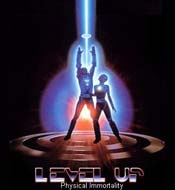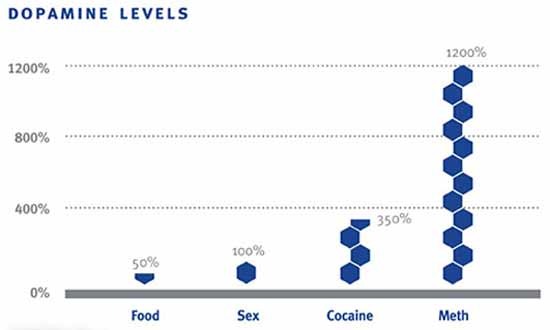News and Site Updates Archive 2010/06/15
I always find that statistics are hard to swallow and impossible to digest.
The only one I can ever remember is that if all the people who go to sleep in church were laid end to end they would be a lot more comfortable.
— Mrs Robert A Taft
 "Once, while I was teaching one of those
elementary logic courses with which philosophy graduate students try to pay their bills, a student asked why we couldn't follow an infinite regress out infinitely, and I answered, in the snide way of
philosophy graduate students, that, if nothing else, death would manage to stop us. What followed,
however, took my breath away, for a student in the back raised his hand and announced that he wasn't going to die, since medical science would cure whatever it was he was going to die from before he
got old enough to experience it. And most of the rest of that class of 18-year-olds nodded in agreement. It was one of those moments all teachers know — a proposition so wrong you don't have
any idea how to begin to correct it. Still, even for 18-year-olds, I didn't really believe that they didn't know they were going to die. Mortality is an ache deep in the bone. The
dying are special, because they are dying and we are always guilty in the face of their deaths. It's not all language games and power struggles. The real intrudes — it radiates back from
death, to dying, to life itself. And knowing that, perhaps we find relief from all the little envies, scraping at the
heart." Quoting Professor Leon Kass: "Perhaps mortality is not simply an evil, perhaps it is
even a blessing — not only for the welfare of the community, but even for us as individuals. The finitude of human life is a blessing for every human individual, whether he knows it or
not." "Once, while I was teaching one of those
elementary logic courses with which philosophy graduate students try to pay their bills, a student asked why we couldn't follow an infinite regress out infinitely, and I answered, in the snide way of
philosophy graduate students, that, if nothing else, death would manage to stop us. What followed,
however, took my breath away, for a student in the back raised his hand and announced that he wasn't going to die, since medical science would cure whatever it was he was going to die from before he
got old enough to experience it. And most of the rest of that class of 18-year-olds nodded in agreement. It was one of those moments all teachers know — a proposition so wrong you don't have
any idea how to begin to correct it. Still, even for 18-year-olds, I didn't really believe that they didn't know they were going to die. Mortality is an ache deep in the bone. The
dying are special, because they are dying and we are always guilty in the face of their deaths. It's not all language games and power struggles. The real intrudes — it radiates back from
death, to dying, to life itself. And knowing that, perhaps we find relief from all the little envies, scraping at the
heart." Quoting Professor Leon Kass: "Perhaps mortality is not simply an evil, perhaps it is
even a blessing — not only for the welfare of the community, but even for us as individuals. The finitude of human life is a blessing for every human individual, whether he knows it or
not."
 A man can feel close to his wife if he's in one room — on the computer, in front of
the tv, or going about his routine — and she's in another. He'll likely protest, sulk, or sink into loneliness if she goes out, which she may well do since he isn't talking to her anyway. To
her, and to uninformed therapists, it seems that he wants her home so he can ignore her. But he isn't ignoring
her; her presence gives stability to his routine. This little example of
why proximity to his wife is crucial to him works wonders in opening a man's eyes to the fact that his wife gives meaning and purpose to his life. In fact, we tend to think about meaning or
purpose only when we're losing it, which is why men tend to fall in love with their wives as they're walking out the door with their bags packed. Evidence for the drastic loss of meaning and
purpose that men suffer when they lose their wives is seen in the effects of divorce and widowerhood on men: poorer job performance, impaired problem-solving, lowered creativity, high distractibility,
"heavy foot" on the gas while driving, anxiety, worry, depression, resentment, anger, aggression, alcoholism, poor nutrition, isolation, shortened lifespan, and suicide. The divorced or widowed
man isn't merely lonely — he's alone with the crushing shame of his failure to protect his
family. Via the New Shelton wet/dry. A man can feel close to his wife if he's in one room — on the computer, in front of
the tv, or going about his routine — and she's in another. He'll likely protest, sulk, or sink into loneliness if she goes out, which she may well do since he isn't talking to her anyway. To
her, and to uninformed therapists, it seems that he wants her home so he can ignore her. But he isn't ignoring
her; her presence gives stability to his routine. This little example of
why proximity to his wife is crucial to him works wonders in opening a man's eyes to the fact that his wife gives meaning and purpose to his life. In fact, we tend to think about meaning or
purpose only when we're losing it, which is why men tend to fall in love with their wives as they're walking out the door with their bags packed. Evidence for the drastic loss of meaning and
purpose that men suffer when they lose their wives is seen in the effects of divorce and widowerhood on men: poorer job performance, impaired problem-solving, lowered creativity, high distractibility,
"heavy foot" on the gas while driving, anxiety, worry, depression, resentment, anger, aggression, alcoholism, poor nutrition, isolation, shortened lifespan, and suicide. The divorced or widowed
man isn't merely lonely — he's alone with the crushing shame of his failure to protect his
family. Via the New Shelton wet/dry.  For many, the sex hormone testosterone is synonymous with everything manly, including aggressive behaviour. But a
new study finds this is not necessarily the case. Women given testosterone act nicer by making fairer offers during a bargaining game than those given a placebo, researchers say.
However, the subjects' preconceived notions about how the hormone should make them act appear to influence their behaviour. Those who simply believe they are given testosterone make less fair
offers, regardless of which substance they actually receive. For many, the sex hormone testosterone is synonymous with everything manly, including aggressive behaviour. But a
new study finds this is not necessarily the case. Women given testosterone act nicer by making fairer offers during a bargaining game than those given a placebo, researchers say.
However, the subjects' preconceived notions about how the hormone should make them act appear to influence their behaviour. Those who simply believe they are given testosterone make less fair
offers, regardless of which substance they actually receive.
The findings add support to the idea that, rather than directly boosting aggression, testosterone might instead promote so-called status-seeking behaviour, in which a person aims to raise or
maintain their status in the social hierarchy.

 Suppose, as some experts advise, new dietary guidelines lower recommended levels of salt
in foods and public health officials force food companies to use less. What will be the effect? Suppose, as some experts advise, new dietary guidelines lower recommended levels of salt
in foods and public health officials force food companies to use less. What will be the effect?
A) Tens of thousands of deaths will be prevented annually.
B) Hundreds of thousands of deaths will be prevented annually.
C) Hundreds of millions of people will be subjected to an experiment with unpredictable and possibly adverse effects.
D) Not much one way or the other.
E) People will get even fatter than they are today.
Don’t worry, there’s no wrong answer, at least not yet. There’s so little reliable evidence that you can imagine just about any outcome. For all the talk about the growing menace of sodium
in packaged foods, experts aren’t even sure people are eating more salt than they used to. When you don’t know past trends, predicting the future is a wide-open game. (My personal favourite
answer is E, further fattening. Never bet against expansion of waistlines.)
 The amount of stress we
endure is increasing because of our focus on efficiency. Stress is caused by uncertainty, more specifically, by doubts in our ability to handle something. As machines and computers handle
more things that are predictable and certain, we are pressured to deal with more things that are unpredictable and uncertain. This inevitably leads to more stress. As soon as our tasks become
predictable and certain, we automate them using our technology. The result of this process of streamlining is that we are increasingly called upon to use our (what I would call) irrational
abilities, such as instincts, sensibilities, creativities, and interpersonal skills. These things are, by nature, unpredictable. Take graphic designers: now — with computers handling
everything from typesetting, layout, image processing, colour management to printing — what used to be done by several specialists are now combined into one person. The number of jobs one can
handle in a year increases dramatically. Designers spend more time being creative, and less time producing final products. This may sound good, but in terms of stress and rewards, it
isn't. Because creativity is irrational and unpredictable, coming up with a creative solution can be highly stressful. Designers now have to supply significantly more creative
solutions per year to earn the same amount of money. Via the New Shelton wet/dry. The amount of stress we
endure is increasing because of our focus on efficiency. Stress is caused by uncertainty, more specifically, by doubts in our ability to handle something. As machines and computers handle
more things that are predictable and certain, we are pressured to deal with more things that are unpredictable and uncertain. This inevitably leads to more stress. As soon as our tasks become
predictable and certain, we automate them using our technology. The result of this process of streamlining is that we are increasingly called upon to use our (what I would call) irrational
abilities, such as instincts, sensibilities, creativities, and interpersonal skills. These things are, by nature, unpredictable. Take graphic designers: now — with computers handling
everything from typesetting, layout, image processing, colour management to printing — what used to be done by several specialists are now combined into one person. The number of jobs one can
handle in a year increases dramatically. Designers spend more time being creative, and less time producing final products. This may sound good, but in terms of stress and rewards, it
isn't. Because creativity is irrational and unpredictable, coming up with a creative solution can be highly stressful. Designers now have to supply significantly more creative
solutions per year to earn the same amount of money. Via the New Shelton wet/dry.  A biological anthropologist tested a group girls aged 7 — 12
with an impromptu speech and series of math problems in front of a panel of strangers, sending their hearts racing and levels of cortisol — a hormone associated with stress — soaring. Once
stressed, 1/3 of the girls were comforted in person by their mothers — specifically with hugs, an arm around the shoulders and the like. Another 1/3 were left to watch an emotion-neutral 75-minute
video. The rest were handed a telephone. It was mom on the line — and the effect was dramatic.
The children who got to interact with their mothers had virtually the same hormonal response, whether they interacted in person or over the phone. The girls' levels of oxytocin, often called
the "love hormone" and strongly associated with emotional bonding, rose significantly and the stress-marking cortisol washed away. It was thought that oxytocin release in the context of
social bonding usually required physical contact, but it's clear from these results that a mother's voice can have the same effect as a hug, even if she isn't there in person. It is unknown at this
point if the actual voice needs to be heard or if text-messaging could have the same effect. Perhaps this stress-reduction capability is limited neither to mother nor to voice and would help to the
explain the popularity of social networks in a stressful world? A biological anthropologist tested a group girls aged 7 — 12
with an impromptu speech and series of math problems in front of a panel of strangers, sending their hearts racing and levels of cortisol — a hormone associated with stress — soaring. Once
stressed, 1/3 of the girls were comforted in person by their mothers — specifically with hugs, an arm around the shoulders and the like. Another 1/3 were left to watch an emotion-neutral 75-minute
video. The rest were handed a telephone. It was mom on the line — and the effect was dramatic.
The children who got to interact with their mothers had virtually the same hormonal response, whether they interacted in person or over the phone. The girls' levels of oxytocin, often called
the "love hormone" and strongly associated with emotional bonding, rose significantly and the stress-marking cortisol washed away. It was thought that oxytocin release in the context of
social bonding usually required physical contact, but it's clear from these results that a mother's voice can have the same effect as a hug, even if she isn't there in person. It is unknown at this
point if the actual voice needs to be heard or if text-messaging could have the same effect. Perhaps this stress-reduction capability is limited neither to mother nor to voice and would help to the
explain the popularity of social networks in a stressful world?

Dopamine is a neurotransmitter, and dopamine cells are known to fire in phasic bursts — short volleys of spikes over millisecond
timescales — in response to something which is either pleasurable in itself, or something learned to be associated with pleasure. Dopamine is therefore thought to be involved in learning what to
do in order to get pleasurable rewards. But baseline, tonic dopamine levels vary over longer periods as well. The function of this tonic dopamine firing, and its relationship, if any, to
phasic dopamine signalling, is less clear. Perhaps the tonic dopamine level represents the brain's estimate of the average availability of rewards in the environment, and it therefore controls
how "vigorously" we should act. A high reward availability means that, in general, there's lots happening, lots of potential gains to be made. So if you're not out there getting some reward,
you're missing out. In economic terms, the opportunity cost of not acting, or acting slowly, is high — so you need to hurry up. On the other hand, if there's only minor rewards available,
you might as well take things nice and slow, to conserve energy. The distinction between phasic dopamine (a specific reward) versus tonic dopamine (overall reward availability) is a bit like the
distinction between fear versus anxiety. Fear is felt when something scary (potentially harmful) is right there in front of
you. Anxiety is the sense that something harmful could be around the next corner.
 Most psychological scientists
aren’t overly concerned with whether or not free will exists, but rather
how people’s everyday reasoning about it, particularly in the moral domain, influences their social behaviours and attitudes. At the core of the question of free will is a debate about
psychological causes of action. That is, do autonomous entities genuinely choose how to act from among multiple possible options? Or are we all essentially links in causal chains, our
actions merely inevitable products of lawful causes stemming from prior events (and we can't act differently than we do)? One of the most striking findings to emerge recently is that when people
believe — or are led to believe — that free will is just an illusion, they tend to become more antisocial and also tend to cheat more. (After all, they can't help it, can they?) If a
deterministic understanding of human behaviour encourages this, then can scientists justify communicating deterministic research findings? (Why is any justification needed if we're
deterministic?) In fact, one Psychological Science article stated, "If exposure to deterministic messages increases the likelihood of unethical actions, then identifying approaches
for insulating the public against this danger becomes imperative." The public can’t handle the truth and should be protected from the true causes of human social behaviour? (Perhaps
social scientists are determined to be arrogant?) See also "Can You or Can't
You?" and "Governed by Committee? Who Is
Responsible?" Most psychological scientists
aren’t overly concerned with whether or not free will exists, but rather
how people’s everyday reasoning about it, particularly in the moral domain, influences their social behaviours and attitudes. At the core of the question of free will is a debate about
psychological causes of action. That is, do autonomous entities genuinely choose how to act from among multiple possible options? Or are we all essentially links in causal chains, our
actions merely inevitable products of lawful causes stemming from prior events (and we can't act differently than we do)? One of the most striking findings to emerge recently is that when people
believe — or are led to believe — that free will is just an illusion, they tend to become more antisocial and also tend to cheat more. (After all, they can't help it, can they?) If a
deterministic understanding of human behaviour encourages this, then can scientists justify communicating deterministic research findings? (Why is any justification needed if we're
deterministic?) In fact, one Psychological Science article stated, "If exposure to deterministic messages increases the likelihood of unethical actions, then identifying approaches
for insulating the public against this danger becomes imperative." The public can’t handle the truth and should be protected from the true causes of human social behaviour? (Perhaps
social scientists are determined to be arrogant?) See also "Can You or Can't
You?" and "Governed by Committee? Who Is
Responsible?"
 The
advice of etiquette experts on dealing with unwanted invitations, or overly demanding requests for favours, has always been the
same: "Just say no." In the war on relatives who want to stay for a fortnight, or
colleagues trying to get you to do their work, the manners guru Emily Post's formulation — "I'm afraid that won't be possible" — remains the gold standard. Excuses merely invite
negotiation. The comic retort has its place (Peter Cook: "Oh dear, I find I'm watching television that night"), and I'm fond of the tautological non-explanation ("I can't, because I'm unable
to"). But the best way to say no is to say "No." Then shut up. The
advice of etiquette experts on dealing with unwanted invitations, or overly demanding requests for favours, has always been the
same: "Just say no." In the war on relatives who want to stay for a fortnight, or
colleagues trying to get you to do their work, the manners guru Emily Post's formulation — "I'm afraid that won't be possible" — remains the gold standard. Excuses merely invite
negotiation. The comic retort has its place (Peter Cook: "Oh dear, I find I'm watching television that night"), and I'm fond of the tautological non-explanation ("I can't, because I'm unable
to"). But the best way to say no is to say "No." Then shut up.
In Ask culture, people grow up believing they can ask for anything — a favour, a pay raise — fully realising the answer may be no. In Guess culture, by contrast, you avoid putting a request
into words unless you're pretty sure the answer will be yes — a key skill is putting out delicate feelers. If you do this with enough subtlety, you won't have to make the request directly; you'll
get an offer. Neither is "wrong", but when an Asker meets a Guesser, unpleasantness results. Via
the New Shelton wet/dry.  You're a vegetarian. You're renting out a spare bedroom to help
make ends meet. A non-vegetarian applies to rent the room, but you find the smell of meat nauseating, and the thought of the death of animals sickening. Can you choose to avoid omnivores by
refusing to rent the room to one? You're a vegetarian. You're renting out a spare bedroom to help
make ends meet. A non-vegetarian applies to rent the room, but you find the smell of meat nauseating, and the thought of the death of animals sickening. Can you choose to avoid omnivores by
refusing to rent the room to one?
A) Of course not, that's discrimination!
B) Uh...well, yeah, because diet choices are completely different than religion, skin colour, gender, sexual orientation, and other protected classes. Uh...somehow.
C) Of course, it's my own home!
Trick question? Are you, perhaps, a vegetarian for religious reasons? Then you may be in trouble.
Roommates.com got sued — and lost — because they require users to answer questions about gender, marital status
and sexual orientation — the check boxes on the site actively solicit discriminatory content, making their service much more than a simple forum. The Fair Housing Council sued the site alleging
that they allow people to discriminate against potential roommates in violation of the Fair Housing Act, which prohibits denying someone a house or a rental on the basis of age, gender, race, or
religion, among other categories. (The court noted that dating sites that promote discrimination are perfectly legal, however, since people are legally free to turn down dates for flimsy or racist
reason if they choose.) There is a provision in the law — called the Mrs Murphy Rule — which allows more leeway
to owners who rent fewer then 3 units in homes they occupy. The hypothetical Mrs Murphy, who runs a boarding house, need not share a bathroom with 3 gay black men if she would rather
not. This exception, though, is only for owners. And while some of the listings on roommates.com are posted by owners of condos or houses, others are just looking for another name to add to
the lease on an apartment; it's often hard to tell the two apart. Either way, the Fair Housing Act makes it illegal to publish anything about whatever discrimination you plan to exercise, even if
that discrimination is technically legal.
Would You Like to Live in New Zealand?



Wellington area:
Cloud 1: Altocumulus Lenticularis in Wellington by Peter Fisher
Cloud 2: Sunrise, Paraparaumu Beach north toward the Tararuas by Gary Waterhouse
Cloud 3: Cook Strait by Dafydd Williams



Elsewhere in NZ:
Cloud 4: Fallstreak Cloud, northeast of New Plymouth by Wally Seccombe
Cloud 5: Lenticular Stacking, Alexandra, South Island by Trish Derrick
Cloud 6: Novara Peak, Mt Cook National Park by A & J Wang
 The Green Party in Sweden
is proposing the implementation of work sharing, a government regulation that forces everyone to work as standard no more than 35 hours per week. Their idea is that if you force people to work
fewer hours, there will be more job for others. The Green Party in Sweden
is proposing the implementation of work sharing, a government regulation that forces everyone to work as standard no more than 35 hours per week. Their idea is that if you force people to work
fewer hours, there will be more job for others.
Problems that cause unemployment are many, but the list never includes "number of people." Instead, the list contains things like the skill composition combined with wage rigidity, cyclical
demand conditions, search friction, taxes and regulations, and market imperfections. None of the core economic forces that create unemployment is affected by permanent work sharing for all
workers.
Countries that have reduced the average hours worked have not been able to achieve lower unemployment and work sharing is guaranteed to harm the economy by making everyone earn less and by
dramatically lowering tax revenue for health care. Legislation to shorten the workweek is bad economic policy.  Red algae (Rhodophyta) can carry out remarkable repairs to damaged cells. Cut a cell across and the cytoplasm escapes,
leaving two fragments of empty, disrupted cell wall lying next to each other. Within 24 hours, however, adjacent cells repair the damage; the empty cell space is restored to full activity,
cell walls meticulously realigned and seamlessly repaired. The only place this can happen is in the lab — in nature the broken ends wouldn't end up near each other. Selection in favour of
automatic repair mechanisms through Darwinian evolution therefore doesn't exist. Yet something happens, though the organism lacks inbuilt responses. It must use problem-solving ingenuity
instead. This poses a question about cell intelligence. Whole living cells are primarily autonomous
and carry out daily tasks with little external mediation. They aren't subservient nanobots: they create and regulate activity, respond to current conditions and make decisions to deal with
unforeseen difficulties. Yet in humans, conventional wisdom says everything is ultimately controlled by the brain. Nevertheless, cells in the liver reproduce at just the right rate to
replace cells lost through attrition; follicular cells create new hair; bone marrow cells produce new circulating blood cells at a rate of millions per minute. In fact, around 90% of cell activity
is invisible to the brain and the cells are indifferent right back. Where does that leave the neuron, the most highly evolved cell we know? After all, neurons are so specialised they've
virtually abandoned division and reproduction. Yet we model them as little more than organic transistors, on/off switches. If a red alga can "work out" how to solve problems, how can human
neurons be so lowly? An extraterrestrial intelligence may believe Earth is an organism and each individual person can't possibly be intelligent on its own, especially given the collective
predictability of groups of them. Are we making the same mistake? Originally from
New Scientist. The single cell of Gromia
sphaerica, shown, can grow up to 3 centimetres in diameter. Red algae (Rhodophyta) can carry out remarkable repairs to damaged cells. Cut a cell across and the cytoplasm escapes,
leaving two fragments of empty, disrupted cell wall lying next to each other. Within 24 hours, however, adjacent cells repair the damage; the empty cell space is restored to full activity,
cell walls meticulously realigned and seamlessly repaired. The only place this can happen is in the lab — in nature the broken ends wouldn't end up near each other. Selection in favour of
automatic repair mechanisms through Darwinian evolution therefore doesn't exist. Yet something happens, though the organism lacks inbuilt responses. It must use problem-solving ingenuity
instead. This poses a question about cell intelligence. Whole living cells are primarily autonomous
and carry out daily tasks with little external mediation. They aren't subservient nanobots: they create and regulate activity, respond to current conditions and make decisions to deal with
unforeseen difficulties. Yet in humans, conventional wisdom says everything is ultimately controlled by the brain. Nevertheless, cells in the liver reproduce at just the right rate to
replace cells lost through attrition; follicular cells create new hair; bone marrow cells produce new circulating blood cells at a rate of millions per minute. In fact, around 90% of cell activity
is invisible to the brain and the cells are indifferent right back. Where does that leave the neuron, the most highly evolved cell we know? After all, neurons are so specialised they've
virtually abandoned division and reproduction. Yet we model them as little more than organic transistors, on/off switches. If a red alga can "work out" how to solve problems, how can human
neurons be so lowly? An extraterrestrial intelligence may believe Earth is an organism and each individual person can't possibly be intelligent on its own, especially given the collective
predictability of groups of them. Are we making the same mistake? Originally from
New Scientist. The single cell of Gromia
sphaerica, shown, can grow up to 3 centimetres in diameter.
 Nottingham Caves Survey: If there’s a cave in your
garden, or under your house or place of work, we’d like to add it to the database — please contact us. A survey team of 2 University of Nottingham archæologists will visit you at a time of your
choosing, including evenings and weekends. We'll bring all necessary equipment with us and make notes on the condition, size, features of, and access to the cave, take photographs, and then survey
it with a laser scanner. This is a non-contact survey technique which allows millions of accurate survey points to be recorded in only a few minutes. The whole process should take less than
an hour for a single cave. You'll have full control over how much detail is publicly accessible through our website. What counts as a cave? We count any man-made cut into the natural
sandstone, as long as some sandstone is visible. So a fully brick-lined cellar we would normally not count, but a brick cellar with part of one wall showing the natural sandstone we'd like to
include. If you have exposed rock in your garden with rooms, cupboards or alcoves cut into it, we’d like to survey that too. And if your brick cellar or terraced garden looks like it should
be surveyed, even if it doesn’t fit those criteria for a cave, do contact us anyway. We’d be happy to come out and have a look! All Nottingham’s caves are important, not only the famous
ones. To know how many there are, what they all do, how far they extend, and whether your cave is a unique example or is representative of a type, it needs to be on the database. Recording
your cave will help protect not only that cave but all caves, and help to preserve Nottingham’s unique and fragile resource for future
generations. More. Nottingham Caves Survey: If there’s a cave in your
garden, or under your house or place of work, we’d like to add it to the database — please contact us. A survey team of 2 University of Nottingham archæologists will visit you at a time of your
choosing, including evenings and weekends. We'll bring all necessary equipment with us and make notes on the condition, size, features of, and access to the cave, take photographs, and then survey
it with a laser scanner. This is a non-contact survey technique which allows millions of accurate survey points to be recorded in only a few minutes. The whole process should take less than
an hour for a single cave. You'll have full control over how much detail is publicly accessible through our website. What counts as a cave? We count any man-made cut into the natural
sandstone, as long as some sandstone is visible. So a fully brick-lined cellar we would normally not count, but a brick cellar with part of one wall showing the natural sandstone we'd like to
include. If you have exposed rock in your garden with rooms, cupboards or alcoves cut into it, we’d like to survey that too. And if your brick cellar or terraced garden looks like it should
be surveyed, even if it doesn’t fit those criteria for a cave, do contact us anyway. We’d be happy to come out and have a look! All Nottingham’s caves are important, not only the famous
ones. To know how many there are, what they all do, how far they extend, and whether your cave is a unique example or is representative of a type, it needs to be on the database. Recording
your cave will help protect not only that cave but all caves, and help to preserve Nottingham’s unique and fragile resource for future
generations. More.

Cutest. Cat. Ever.
 This 14-minute
documentary, made in Wellington in 1971, looks at the working lives of a crew of Wellington rubbish collectors also known as "the dusties". With an insightful dustie narrating, the film
follows the team on their rounds, beginning early morning with the seagulls at the depot. Then it's into the trucks and off to face occupational hazards: irate householders, sodden winter sacks,
and notoriously steep hills. Our dustie muses on everything from health benefits and job perks (discarded beer, money and toasters!) to cleanliness. This 14-minute
documentary, made in Wellington in 1971, looks at the working lives of a crew of Wellington rubbish collectors also known as "the dusties". With an insightful dustie narrating, the film
follows the team on their rounds, beginning early morning with the seagulls at the depot. Then it's into the trucks and off to face occupational hazards: irate householders, sodden winter sacks,
and notoriously steep hills. Our dustie muses on everything from health benefits and job perks (discarded beer, money and toasters!) to cleanliness.
I found it curiously interesting and wonder if they still have the same sense of camaraderie.
 Shannon Tooker, left, Marcy Terry, centre, and Stayce McConnell from the
Weeki Wachee Mermaids synchronised underwater aquabatics
troupe pose outside the Sea Life London Aquarium, London, 14 May 2010.
The troupe is from Florida in the US. They performed their first-ever overseas performance in London last month. (AP Photo/Sang Tan).
  Naked volunteers pose for US artist Spencer Tunick in front of the Sydney Opera House, 1 March 2010. Organisers
estimate 5,200 people posed for the early morning nude photo installation entitled, "Mardi Gras: The Base". Reuters/Tim Wimborne. Naked volunteers pose for US artist Spencer Tunick in front of the Sydney Opera House, 1 March 2010. Organisers
estimate 5,200 people posed for the early morning nude photo installation entitled, "Mardi Gras: The Base". Reuters/Tim Wimborne.
In 2007, a record 18,000 people took off their clothes to pose for Tunick in Mexico
City's Zocalo Square, the heart of the ancient Aztec empire. Tunick has staged mass nude photo shoots in cities from Dusseldorf, Germany, to Caracas, Venezuela. His previous record was
7,000 volunteers set in 2003 in Barcelona, Spain. Reuters/Tomas Sarmiento.
Who knew there were that many people just waiting for an invitation to take off their clothes in public? 
Novel presentation of rather mediocre food
 A man whose
arrest was caught on video faces felony charges from Maryland State Police for recording it on camera. "We are enforcing the law, and we don't make any apologies for that," said Greg Shipley,
Maryland State Police. Video of another arrest at the Preakness quickly made its way online, despite an officer issuing this warning to the person who shot it, "Do me a favour and turn that
off. It's illegal to videotape anybody's voice or anything else — against the law in the state of Maryland." But is he right? Can police stop you from recording their actions, like a
beating at the University of Maryland College Park? The American Civil Liberties Union (ACLU) says no. "For the government to be saying it has the power to prevent citizens from doing that
is profoundly shocking, troubling, and, particularly in the case of Maryland, simply flat-out wrong," said David Roach of the ACLU. Under Maryland law, conversations in private cannot be recorded
without the consent of both people involved. "When you tell me to turn it off because it's against the law, you've proven to me that I'm not secretly taping you," said law professor Byron
Warnken. "He doesn't have the right to say, if you don't stop recording me, I'm going to arrest you." A man whose
arrest was caught on video faces felony charges from Maryland State Police for recording it on camera. "We are enforcing the law, and we don't make any apologies for that," said Greg Shipley,
Maryland State Police. Video of another arrest at the Preakness quickly made its way online, despite an officer issuing this warning to the person who shot it, "Do me a favour and turn that
off. It's illegal to videotape anybody's voice or anything else — against the law in the state of Maryland." But is he right? Can police stop you from recording their actions, like a
beating at the University of Maryland College Park? The American Civil Liberties Union (ACLU) says no. "For the government to be saying it has the power to prevent citizens from doing that
is profoundly shocking, troubling, and, particularly in the case of Maryland, simply flat-out wrong," said David Roach of the ACLU. Under Maryland law, conversations in private cannot be recorded
without the consent of both people involved. "When you tell me to turn it off because it's against the law, you've proven to me that I'm not secretly taping you," said law professor Byron
Warnken. "He doesn't have the right to say, if you don't stop recording me, I'm going to arrest you." 
 Texas
Stadium was a football stadium in Irving, Texas (a suburb of Dallas). Built for $35 million, it replaced the ageing Cotton Bowl. Opened in 1971, it was home field of the National
Football League's Dallas Cowboys, with a seating capacity of 65,675. In 2009, it was replaced by Cowboys Stadium (seating capacity 82,000, cost $1.3 billion) in Arlington, Texas. Texas
Stadium was to have originally had a retractable roof (to allow for real grass rather than artificial turf), but the structure couldn't support the weight, resulting in most of the stands being
enclosed (though some fans could still get wet when it rained) but the playing field itself was open. The new stadium's retractable roof system includes a setting that mimics a hole in the roof as
a tribute to Texas Stadium. The city of Irving and Kraft Foods announced a sponsorship deal for the old stadium's $6 million implosion — including a national essay contest with the winner getting
to initiate the process that finished it off. Texas Stadium was demolished by controlled implosion on 11 April 2010; 11-year-old Casey Rogers pressed the button. It took approximately 25
seconds to complete. This seems to me to be a sad waste of resource as the stadium was still useable (and used by nearby universities and high schools). But
presumably it was no longer commercially
viable. Irving Mayor Herbert Gears said, “You can’t charge high schools only $5,000 a game and still pay the $200,000 a month it costs us for security and to keep the lights
on.” And the new Cowboy Stadium? (The NFL's largest, by the way): the
$40 million videoboard, suspended 90 feet above the field with 4 screens, stretches nearly 60 yards and weighs 600 tons. (Unfortunately, a punter's kick hit the board in a preseason game but there
is room to raise it if need be.) The screens are 7 stories tall, attached to the stadium's signature arches, which also house tracks for a translucent retractable roof. There are more than
3,000 LED monitors throughout the facility that use digital technology to instantly display whatever — live action, historical footage, data, or prices for concession items. The 120-feet-high
glass doors at the end zone entrances are retractable (like the roof), creating space the size of an airplane hangar that adds to the open-air ambience. Now the Cowboys are the nation's most
valuable sports franchise, worth $1.65 billion, according to Forbes. Their home games have an average ticket price of
$159.65. The fees for premium parking alone are estimated at $75 per game. Texas
Stadium was a football stadium in Irving, Texas (a suburb of Dallas). Built for $35 million, it replaced the ageing Cotton Bowl. Opened in 1971, it was home field of the National
Football League's Dallas Cowboys, with a seating capacity of 65,675. In 2009, it was replaced by Cowboys Stadium (seating capacity 82,000, cost $1.3 billion) in Arlington, Texas. Texas
Stadium was to have originally had a retractable roof (to allow for real grass rather than artificial turf), but the structure couldn't support the weight, resulting in most of the stands being
enclosed (though some fans could still get wet when it rained) but the playing field itself was open. The new stadium's retractable roof system includes a setting that mimics a hole in the roof as
a tribute to Texas Stadium. The city of Irving and Kraft Foods announced a sponsorship deal for the old stadium's $6 million implosion — including a national essay contest with the winner getting
to initiate the process that finished it off. Texas Stadium was demolished by controlled implosion on 11 April 2010; 11-year-old Casey Rogers pressed the button. It took approximately 25
seconds to complete. This seems to me to be a sad waste of resource as the stadium was still useable (and used by nearby universities and high schools). But
presumably it was no longer commercially
viable. Irving Mayor Herbert Gears said, “You can’t charge high schools only $5,000 a game and still pay the $200,000 a month it costs us for security and to keep the lights
on.” And the new Cowboy Stadium? (The NFL's largest, by the way): the
$40 million videoboard, suspended 90 feet above the field with 4 screens, stretches nearly 60 yards and weighs 600 tons. (Unfortunately, a punter's kick hit the board in a preseason game but there
is room to raise it if need be.) The screens are 7 stories tall, attached to the stadium's signature arches, which also house tracks for a translucent retractable roof. There are more than
3,000 LED monitors throughout the facility that use digital technology to instantly display whatever — live action, historical footage, data, or prices for concession items. The 120-feet-high
glass doors at the end zone entrances are retractable (like the roof), creating space the size of an airplane hangar that adds to the open-air ambience. Now the Cowboys are the nation's most
valuable sports franchise, worth $1.65 billion, according to Forbes. Their home games have an average ticket price of
$159.65. The fees for premium parking alone are estimated at $75 per game.
 Architect Gary Chang grabbed a handle near the wall-mounted tv, pulling a section of the wall itself toward the
centre of the room. Behind it, a small countertop with 2 burners, a sink and spice rack appeared. Opposite, on back of the now-displaced wall, he lowered a hinged worktop made of
lightweight laminate honeycombed aluminium. Suddenly, he was standing in a kitchen — "maximum kitchen," he calls it. This and the "video game room" he was sitting in minutes before are just
2 of at least 24 different layouts that he can impose on his 344-square-foot apartment. What appears to be an open-plan studio actually contains many rooms, because of sliding wall units and
fold-down tables and chairs. Mr Chang's experiment in flexible living began in 1988, when his family moved into a bigger apartment with his grandparents and uncles. His mother suggested he
assume the lease on their old apartment, "because the rent was unusually low." Instead he bought it for $45,000. He had been itching to remodel it since his teenage years. In 2
decades, he has renovated 3 times on progressively bigger budgets as his company, Edge Design Institute, has grown. His latest effort took a year and cost just over $218,000. He hopes some
of his innovations might be replicated to help improve domestic life in Hong Kong, troubled by population growth (nearly a half-million in just the past decade); child, spousal and
elder abuse has nearly doubled, attributed in part to social pressures caused by the city’s ongoing space shortage. Mr Chang said, "Killing each other is not uncommon. People feel
trapped. We have to find ways to live together in very small spaces." Slideshow. Another of his projects, "Suitcase House" with slideshow. Architect Gary Chang grabbed a handle near the wall-mounted tv, pulling a section of the wall itself toward the
centre of the room. Behind it, a small countertop with 2 burners, a sink and spice rack appeared. Opposite, on back of the now-displaced wall, he lowered a hinged worktop made of
lightweight laminate honeycombed aluminium. Suddenly, he was standing in a kitchen — "maximum kitchen," he calls it. This and the "video game room" he was sitting in minutes before are just
2 of at least 24 different layouts that he can impose on his 344-square-foot apartment. What appears to be an open-plan studio actually contains many rooms, because of sliding wall units and
fold-down tables and chairs. Mr Chang's experiment in flexible living began in 1988, when his family moved into a bigger apartment with his grandparents and uncles. His mother suggested he
assume the lease on their old apartment, "because the rent was unusually low." Instead he bought it for $45,000. He had been itching to remodel it since his teenage years. In 2
decades, he has renovated 3 times on progressively bigger budgets as his company, Edge Design Institute, has grown. His latest effort took a year and cost just over $218,000. He hopes some
of his innovations might be replicated to help improve domestic life in Hong Kong, troubled by population growth (nearly a half-million in just the past decade); child, spousal and
elder abuse has nearly doubled, attributed in part to social pressures caused by the city’s ongoing space shortage. Mr Chang said, "Killing each other is not uncommon. People feel
trapped. We have to find ways to live together in very small spaces." Slideshow. Another of his projects, "Suitcase House" with slideshow.
The Fantasy:



The Reality:



Not all hotel brochures are grounded in reality.
1) "Hotel 91 is a new 70-room smoke-free hotel located in
Manhattan's vibrant Lower East Side. Chinatown, Little Italy, SoHo, Wall Street, and other major NYC attractions are only steps away" — or so says its website. But here's the real breakdown:
Chinatown is 0 steps, Little Italy is 1,000 steps, SoHo is 1,600 steps, and Wall Street is 2,200 steps. It seems that the Hotel 91 tries to distance itself from its actual location — under the
Manhattan Bridge, in the bustling heart of Chinatown.
2) Hawaii Photo Fakeout: Equus shows us the magical art of the
teensy pool crop. If a hotel's pool photos are presented in an artfully-trimmed way so as to (perhaps) suggest that there is much, much more to the pool — there usually isn't.
3) DC Hyatt Photo Fakeout: The US Capitol is close, but not this
close. Proximity to power is valuable currency in Washington, DC, so it won’t surprise folks inside the Beltway that the city’s prominent players occasionally exaggerate their standing. But
this photo, which appears on the website of the Hyatt Regency Washington on Capitol Hill, gives the false impression that the hotel practically stands in the shadows of the US Capitol — it
doesn’t. (In Washington, things aren’t always what they seem.)

Peruvian surfer Domingo Pianezzi rides a wave with his alpaca Pisco at San Bartolo beach in Lima, 16
March 2010.
Pianezzi has spent a decade training dogs to ride the nose of his board when he catches waves, and now he's the first to do so with an alpaca (who wears a life jacket, if you care to
know). Reuters/Pilar Olivares.
 Based on
a survey of 1,050 evangelical pastors (note these are evangelical pastors not liberal
pastors): Based on
a survey of 1,050 evangelical pastors (note these are evangelical pastors not liberal
pastors):
 89% considered leaving the ministry at one time.
 57% said they would leave if they had a better place to go — including secular work.
 77% felt they did not have a good marriage.
 75% felt they were unqualified and/or poorly trained by their seminaries to lead and manage the church or to
counsel others. This left them disheartened in their ability to pastor.
 71% stated they were burned out and they battle depression beyond fatigue on a weekly and even a daily
basis.
 38% said they are divorced or currently in divorce proceedings.
 30% have either an ongoing affair or have had a one-time sexual encounter with a parishioner.
 23% said they feel happy and content on a regular basis with who they are in Christ, in their church, and
in their home.
The same article also gives the following research distilled from Barna, Focus on the Family, and Fuller Seminary.
 1,500 pastors leave the ministry each month due to moral failure, spiritual burnout, or contention in their
churches.
 50% of pastors' marriages will end in divorce.
 80% of pastors feel unqualified and discouraged in their role as pastor.
 50% of pastors are so discouraged that they would leave the ministry if they could, but have no other way
of making a living.
 80% of seminary and Bible school graduates who enter the ministry will leave the ministry within the first
5 years.
 70% of pastors constantly fight depression.
 40% of pastors polled said they have had an extra-marital affair since beginning their ministry.
Via Pharyngula.  "The result of a
disastrous cross-breeding experiment, the Africanized bicycle has proven to be an ever-spreading plague. Initially intended to be more resistant to road hazards than the local variety,
the African bikes are a major threat to cars passing by, which they take down with thousands of tiny scratches. Numerous wrecks have already happened and scientists watch in fear as the Tour de
France, height of their breeding season, approaches. "The result of a
disastrous cross-breeding experiment, the Africanized bicycle has proven to be an ever-spreading plague. Initially intended to be more resistant to road hazards than the local variety,
the African bikes are a major threat to cars passing by, which they take down with thousands of tiny scratches. Numerous wrecks have already happened and scientists watch in fear as the Tour de
France, height of their breeding season, approaches.
"Less aggressive local bikes, which usually ding cars mostly only when threatened, are no match.”



Holding on to Myself, 2006
Snowballs, 2005
White Hand, 2007
Peter Callesen does amazing things with paper. Many of his
paper cut sculptures are religion-themed, which puts me off a bit, but whatever.
He feels that "the negative and absent 2-dimensional space left by the cut points out the contrast to the 3-dimensional reality it creates."
(Artists tend to be a bit flowery and windy.)

Photoshop Day Cream

The Great Lakes region of North America, taken by the sea-viewing wide field-of-view sensor (SeaWiFS) aboard
GeoEye’s SeaStar satellite in December 2000.
As cold air flows northwest across the relatively warm Lakes Nipigon (top left), Superior, and Michigan, the warm, moist air rises and mixes with with the cold, dry wind. This forms a
stratocumulus cloud layer (a typical lake effect). As the process continues, the water droplets in the cloud layer may freeze and grow into snowflakes, sometimes creating massive
snowstorms.

I thought this was a great fireplace and sent this photo to my son telling him I wanted one. He pointed out that the
tendency might, for some, be to lean against the hood for support while poking at the fire. This could potentially inflict possibly serious burns. A non-heat-conducting guard around the
hood's rim (or else spikes if the hood can't safely withstand the pressure of someone bracing himself on it) is maybe called for? 
A timeline of 205 eruptions in Iceland over the past 1,100 years finds that
they occur in regular cycles — with the relatively quiet phase that dominated the past 5 decades now coming to an end. At least 3 other big Icelandic volcanoes are building toward
eruptions. The frequency seems to rise and fall in a cycle lasting around 140 years. Some geologists warn of a serious threat from a 4th volcano, Katla, 15 miles east of
Eyjafjallajokull. Two of its past 3 eruptions seem triggered by those of its smaller neighbour and a report suggests Katla is "close to failure". The other volcanoes potentially
close to a large eruption are Grimsvotn, Hekla and Askja — all bigger than Eyjafjallajokull. In the past, they've proven devastating. Hekla alone has erupted 20 times since AD874 (including
a minor eruption in 2000), pouring out a total of 2 cubic miles of lava from a line of fissures stretching across the mountain. Geologists report snow is once again melting on Hekla’s summit,
suggesting rising magma. Grimsvotn lies under the huge Vatnajokull glacier in Iceland’s southeast. A 1996 eruption saw much of this glacial ice melt, causing a flood that washed away the
country’s main ring road. It is linked to the massive Laki fissure volcano whose 1783 eruption ejected so much ash into the atmosphere that it cooled the entire northern hemisphere for nearly 3
years; resulting low temperatures caused crop failures and famines that killed 2 million people and helped trigger the French Revolution.
 He was born to ride — and that's how his family sent him off. After 22-year-old David
Morales Colon was murdered, his family enlisted the help of Marin Funeral Home in San Juan, Puerto Rico, to make his wake a tribute to his life's passion — motorcycling. Colon's body was embalmed, dressed in shades and blue jeans, and set
astride his Honda CBR600 for the duration of his 3-day wake. (No helment needed, I guess.) The funeral home owner said it takes special skill to make the body rigid enough to pose, yet
not too stiff to put back in a coffin for burial. "Embalming is the key," the funeral home owner said. The funeral home reportedly has experience handling unusual requests. In 2008, a
24-year-old man who died told his family he wanted to be happy and standing at his own funeral. So undertakers posed him that way for the entirety of his wake. Marin said reaction to such
post-mortem displays is "divided". He was born to ride — and that's how his family sent him off. After 22-year-old David
Morales Colon was murdered, his family enlisted the help of Marin Funeral Home in San Juan, Puerto Rico, to make his wake a tribute to his life's passion — motorcycling. Colon's body was embalmed, dressed in shades and blue jeans, and set
astride his Honda CBR600 for the duration of his 3-day wake. (No helment needed, I guess.) The funeral home owner said it takes special skill to make the body rigid enough to pose, yet
not too stiff to put back in a coffin for burial. "Embalming is the key," the funeral home owner said. The funeral home reportedly has experience handling unusual requests. In 2008, a
24-year-old man who died told his family he wanted to be happy and standing at his own funeral. So undertakers posed him that way for the entirety of his wake. Marin said reaction to such
post-mortem displays is "divided".
 The American military is largely prohibited from operating inside
Pakistan. And under Pentagon rules, the army is not allowed to hire contractors for spying. Military officials said that when General David H Petraeus, the top commander in the region,
signed off on the operation in January 2009, there were prohibitions against intelligence gathering, including hiring agents to provide information about enemy positions in Pakistan. The
contractors were supposed to provide only broad information about the political and tribal dynamics in the region, and information that could be used for "force protection." Some Pentagon
officials said that over time the operation appeared to morph into traditional spying activities and pointed out that the supervisor who set up the contractor network, Michael D Furlong, was now under
investigation. But a review of the programme by The New York Times found that Mr Furlong’s operatives still provide information using the same intelligence-gathering methods as
before. The contractors are still being paid under a $22 million contract managed by Lockheed Martin and supervised by the Pentagon office in charge of special operations
policy. (And is anyone surprised?) The American military is largely prohibited from operating inside
Pakistan. And under Pentagon rules, the army is not allowed to hire contractors for spying. Military officials said that when General David H Petraeus, the top commander in the region,
signed off on the operation in January 2009, there were prohibitions against intelligence gathering, including hiring agents to provide information about enemy positions in Pakistan. The
contractors were supposed to provide only broad information about the political and tribal dynamics in the region, and information that could be used for "force protection." Some Pentagon
officials said that over time the operation appeared to morph into traditional spying activities and pointed out that the supervisor who set up the contractor network, Michael D Furlong, was now under
investigation. But a review of the programme by The New York Times found that Mr Furlong’s operatives still provide information using the same intelligence-gathering methods as
before. The contractors are still being paid under a $22 million contract managed by Lockheed Martin and supervised by the Pentagon office in charge of special operations
policy. (And is anyone surprised?)
 Wiggle
stereoscopy is the simplest stereogram viewing technique, alternating between left and right images of a stereogram (easily accomplished in a web browser with an animated .gif image, flash applet
or a specialised java applet). Most people can get a crude sense of dimensionality from such images due to parallax. Closing one eye and moving the head from side-to-side when viewing a
selection of objects helps understand how it works (closer objects move more than those further away). The effect may be observed by a passenger in a moving vehicle where distant hills or tall
buildings appear in 3-dimensional relief, a view not seen by a static observer as distance is beyond the range of effective binocular vision. Advantages of the wiggle viewing method include: Wiggle
stereoscopy is the simplest stereogram viewing technique, alternating between left and right images of a stereogram (easily accomplished in a web browser with an animated .gif image, flash applet
or a specialised java applet). Most people can get a crude sense of dimensionality from such images due to parallax. Closing one eye and moving the head from side-to-side when viewing a
selection of objects helps understand how it works (closer objects move more than those further away). The effect may be observed by a passenger in a moving vehicle where distant hills or tall
buildings appear in 3-dimensional relief, a view not seen by a static observer as distance is beyond the range of effective binocular vision. Advantages of the wiggle viewing method include:
 No glasses or special hardware required.
 Most people can "get" the effect much quicker than cross-eyed and parallel viewing techniques.
 (Sadly for me) It's the only method of stereoscopic visualisation for people with limited or no vision in
one eye.
Disadvantages include:
 Doesn't provide true binocular stereoscopic depth perception.
 Not suitable for print; limited to displays that can "wiggle" between the two images.
 Difficult to appreciate details in images constantly moving.
 Lack of 3D illusion to those who can detect wiggling too easily.
Most wiggle images use only 2 images, leading to annoying jerks. A smoother result, more akin to a motion picture image where the camera is moved back and forth, can be composed by using several
intermediate images (perhaps with synthetic motion blur) and longer image residency at the end to allow inspection of detail. Another option is shorter times between frames through use of an
animated .png. The "wiggle" method isn't a true 3D stereoscopic format because, to experience true binocular depth perception, each eyeball must be presented with a different image at the same
time — which is not the case here. The apparent "stereo-like effect" comes from syncing wiggle timing with the amount of parallax processing done by the visual cortex. 3 or 5 images with
good parallax produce a much better effect than 2. The part I thought was interesting: Many small animals (often prey evolved to have non-overlapping vision, thus giving them a wider
field of view) bob their heads to create motion parallax (wiggling) to better estimate distance before jumping. 
At present, a number of adaptationist theories posit that the human capacity for music is a product of natural selection, reflecting the survival value of musical
behaviours in our species’ past. In sharp contrast, a prominent nonadaptationist theory of music argues that music is a human invention and is biologically useless. Research on music and
the brain supports neither of these views. Contrary to adaptationist theories, neuroscientific research suggests that the existence of music can be explained without invoking any
evolutionary-based brain specialisation for musical abilities. And neuroscience research suggests that music can be biologically powerful — this means that musical behaviours (for example,
playing and/or listening) can have lasting effects on non-musical brain functions, such as language and attention, within individual
lifetimes.
Music is thus theorised to be a biologically powerful human invention, or “transformative technology of the mind.”
Speaking of technology, the orchestra above is the Cosmo Orchestra, playing at the
Cosmo Theatre (which was designed and constructed by Thaumaturgy Studios, Ltd., our animation company). In a couple of months, we'll be opening our theatre for online tours and we hope to see
you there.
  
A sense of duty is useful in work but offensive in personal relations. People wish to be liked, not to be endured with patient resignation.
— Bertrand Russell

For other updates click "Home" (for the latest) or "Next" (for older) below
|
 Animals
Animals Animation
Animation Art of Playing Cards
Art of Playing Cards Drugs
Drugs Education
Education Environment
Environment Flying
Flying History
History Humour
Humour Immigration
Immigration Info/Tech
Info/Tech Intellectual/Entertaining
Intellectual/Entertaining Lifestyles
Lifestyles Men
Men Money/Politics/Law
Money/Politics/Law New Jersey
New Jersey Odds and Oddities
Odds and Oddities Older & Under
Older & Under Photography
Photography Prisons
Prisons Relationships
Relationships Science
Science Social/Cultural
Social/Cultural Terrorism
Terrorism Wellington
Wellington Working
Working Zero Return Investment
Zero Return Investment
















































